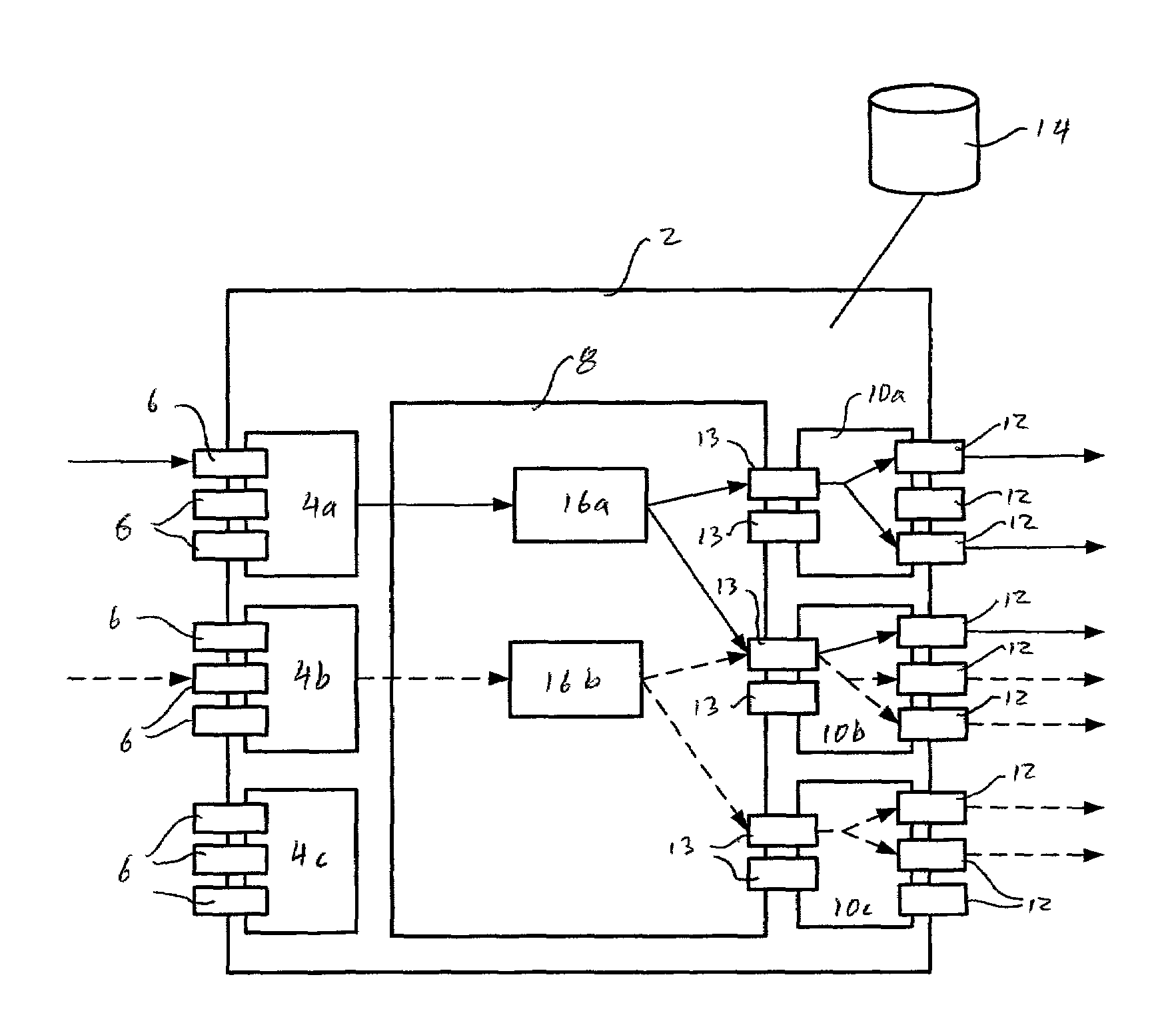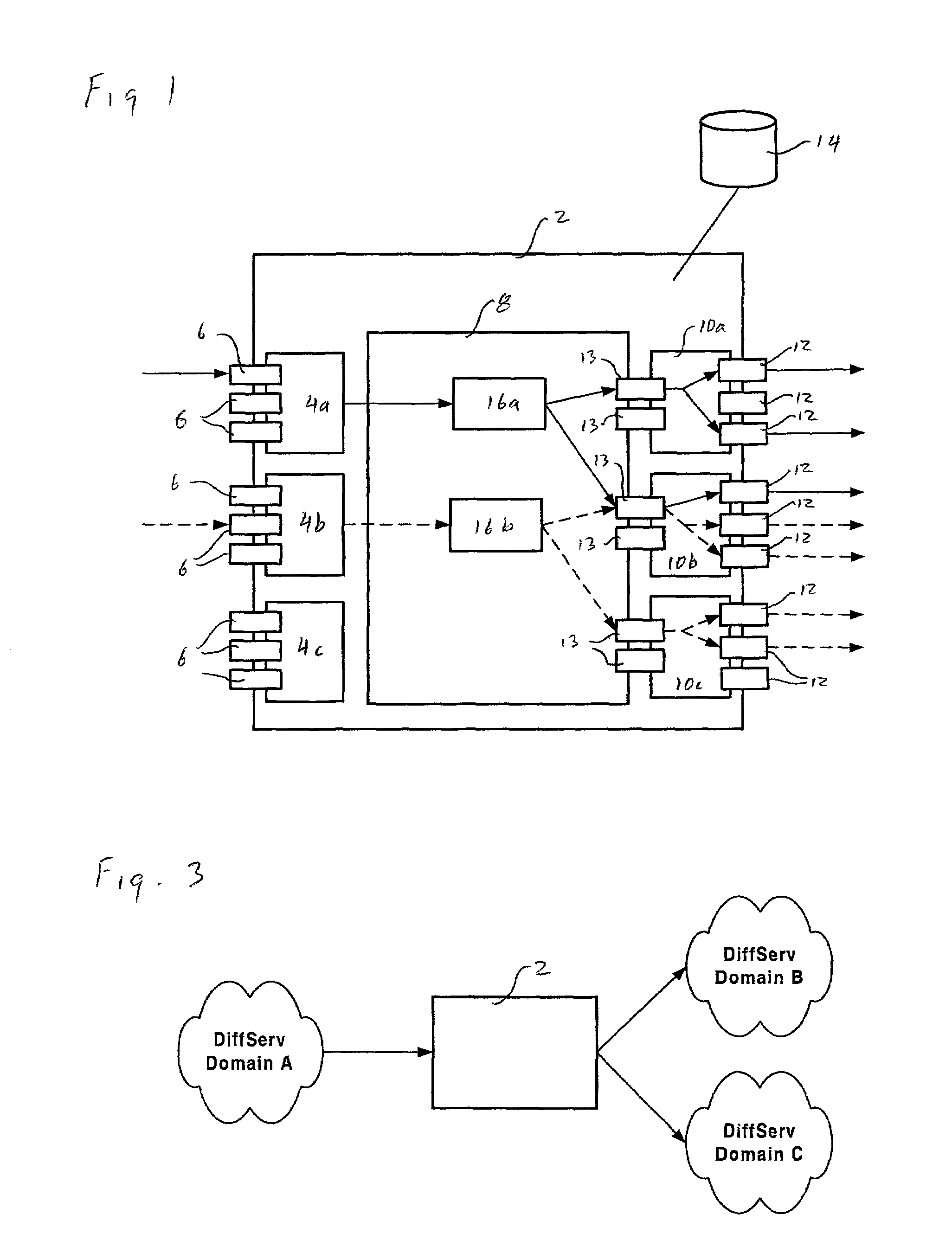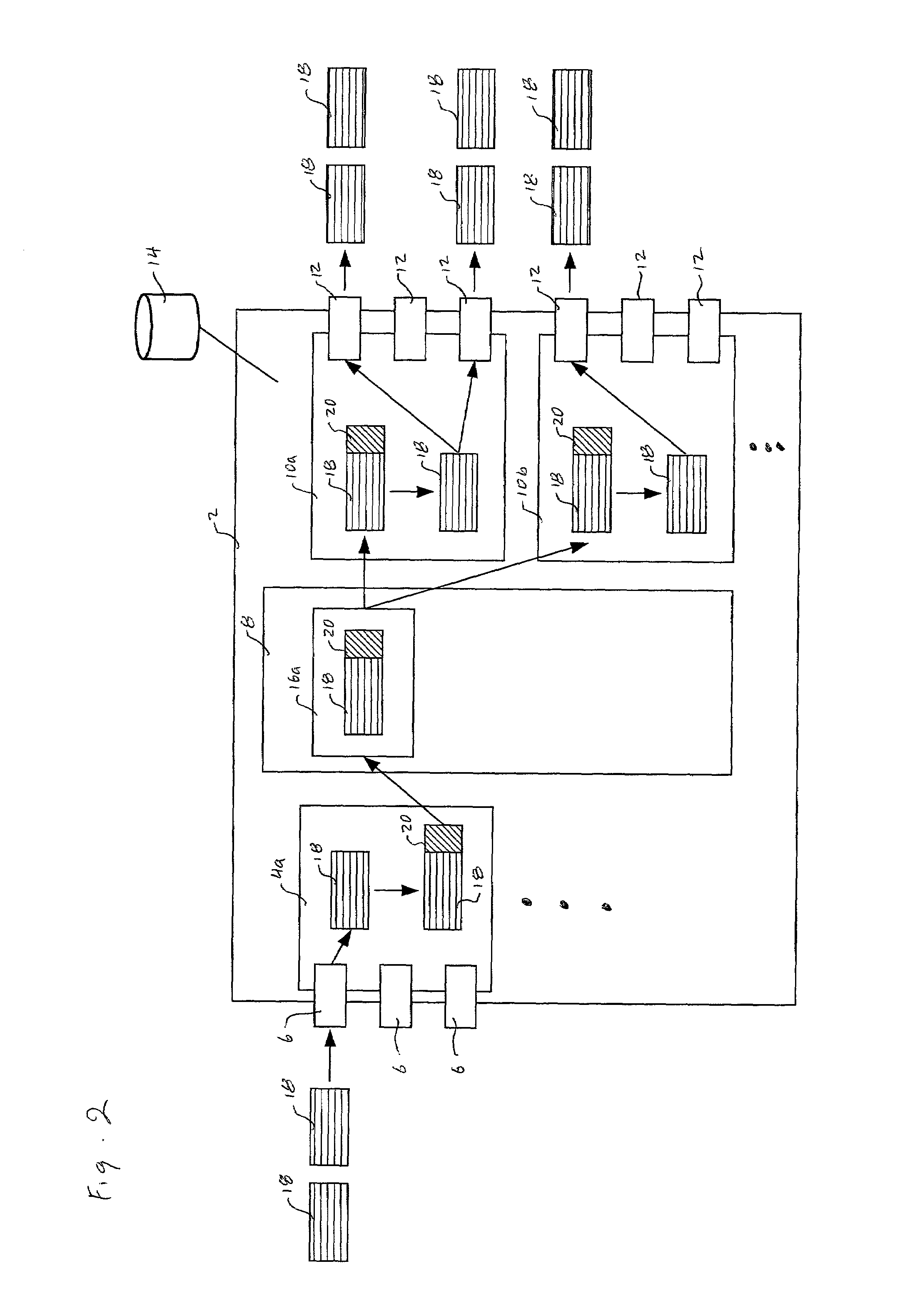Method and apparatus for routing data traffic across a multicast-capable fabric
a multicast-capable fabric and data traffic technology, applied in data switching networks, data switching details, digital transmission, etc., can solve the problems of inability to provide flow-specific routing of multicast traffic, information identifying a source of multicast traffic (e.g., ) is not available to either the switch fabric or the egress interface, etc., to achieve the effect of improving reliability and efficiency of operation
- Summary
- Abstract
- Description
- Claims
- Application Information
AI Technical Summary
Benefits of technology
Problems solved by technology
Method used
Image
Examples
example 1
[0046]FIGS. 1 and 2 illustrate an embodiment of the present invention in which a multicast traffic stream is conveyed through the node 2 between ingress interface 4a and egress interfaces 10a and 10b via an intra-switch multicast group 16a mapped through the switch fabric 8. In the example of FIGS. 1 and 2, the parameter provides information identifying the ingress network port 6 of the respective data stream, and includes ingress interface (i.e. card) 4a, ingress network port 6, and source physical port identifiers. In combination with the intra-switch multicast group ID (which is conventionally passed to each egress interface 10a,10b during setup of the intra-switch multicast group 16a), this parameter can be used to control egress processing of the data stream. This egress processing may be specific to the egress interface (that is, all traffic flowing through the same egress interface 10a,10b receives the same egress processing), or alternatively may be specific to the egress ne...
example 2
[0051]FIG. 3 is a block diagram illustrating replication and forwarding of multicast traffic to heterogenous DiffServ domains. In this respect, DiffServe domains are considered to be “heterogenous” if QoS information encoded within the packet overhead must be modified (or “adapted”) in order to obtain equivalent QoS handling within each domain. In this situation, at least the DiffServ Codepoint (DSCP), (and possibly other QoS parameters of the data traffic) must be modified in order to obtain uniform QoS treatment in each of the respective DiffServ domains. This can be accomplished by assertion of a TRANSLATE policy decision to implement adaptation of the DSCP (and possibly other QoS parameters) to facilitate transport of data traffic between the heterogenous DiffServ domains.
[0052]In simple embodiments, the parameter contained in the intra-switch header 20 may be used to query a translation table (which may be egress port specific) of the database 14 to obtain a new DSCP for the ou...
example 3
[0060]FIG. 4 is a block diagram illustrating replication of multicast traffic within a VLAN environment. In this case, it is known that branches of a common VLAN can be set up having differing VLAN IDs. While this is not an intended result of the VLAN setup procedure, it can occur, and thus a VLAN network node must be able to accommodate this situation. In accordance with the present invention, the TRANSLATE policy decision can be used, during egress processing, to modify the VLAN ID within the overhead of outgoing packets. Thus in a VLAN environment, the TRANSLATE policy option allows for the arbitrary translation (on an egress port-specific basis) between the input VLAN identifier to any egress VLAN identifier, thereby providing a 1 to N translation capability. This functionality may be implemented using a normalization procedure similar to that described above in respect of the DSCP translation. In some cases, however, it may not be necessary to use an approach as computationally...
PUM
 Login to View More
Login to View More Abstract
Description
Claims
Application Information
 Login to View More
Login to View More - R&D
- Intellectual Property
- Life Sciences
- Materials
- Tech Scout
- Unparalleled Data Quality
- Higher Quality Content
- 60% Fewer Hallucinations
Browse by: Latest US Patents, China's latest patents, Technical Efficacy Thesaurus, Application Domain, Technology Topic, Popular Technical Reports.
© 2025 PatSnap. All rights reserved.Legal|Privacy policy|Modern Slavery Act Transparency Statement|Sitemap|About US| Contact US: help@patsnap.com



